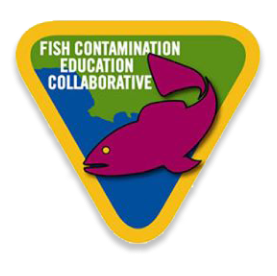Cleaning Up the Shelf: The Current State of Palos Verdes Shelf Remediation
As FCEC has addressed in a previous post, Sediment 101, the Palos Verdes Shelf is an area of the Pacific continental shelf off the Palos Verdes peninsula that is contaminated with the pesticide DDT (dichloro-diphenyl-trichloroethane) and waste from industrial lubricants called PCBs (polychlorinated biphenyls).
Carmen White is the Remedial Project Manager U.S. EPA Region 9 and head of FCEC. Recently Carmen provided an update on remediation of the Palos Verdes Shelf Superfund site by addressing the questions below.
How often is data collected regarding levels or DDTs and PCBs in sediment, water and fish around the Palos Verdes Shelf?
 Carmen White: EPA selected a remedy for the Palos Verdes Shelf Superfund site that includes capping the erosive edge of the contaminated sediment deposit, monitoring the natural recovery that is occurring along the Shelf, and continuing the outreach and education program that informs anglers of the risk posed by certain fish species caught around PV Shelf.
Carmen White: EPA selected a remedy for the Palos Verdes Shelf Superfund site that includes capping the erosive edge of the contaminated sediment deposit, monitoring the natural recovery that is occurring along the Shelf, and continuing the outreach and education program that informs anglers of the risk posed by certain fish species caught around PV Shelf.
The first step toward implementation of the remedy was collection of baseline data that will enable EPA to measure the effectiveness of the cap. From 2009 to 2011, EPA collected and analyzed sediment cores and water samples across the Shelf. Five years after capping, EPA will again collect sediment and water samples across the Shelf to gauge the post-capping reduction in DDTs and PCBs.
Can you talk a bit about the findings?
Carmen White: Changes in water, sediment and fish are seldom noticeable from year to year. The last in-depth monitoring of the Palos Verdes Shelf—that included PCBs as well as DDTs—was during the Natural Resource Damage Assessment in the 1990s. The amount of contaminated sediment is significantly less than what was measured then.
What is the current timeframe for the capping construction (interim remedy) of the 300 acre contaminated area?
Carmen White: This Fall EPA completed field studies that will help with cap design. The studies will help us identify the best material to use for the cap and the exact location and size of the cap. Cap construction is still a year or two away.
What does it mean for FCEC after remediation is completed?
Carmen White: FCEC is an integral part of the remedy and will continue for the foreseeable future.
We are making progress and FCEC’s work in educating the public about health effects associated with consuming contaminated fish will continue! For more information on the contamination of the Palos Verdes Shelf, how it happened and what’s being done to clean it up, please check out our Project History page.
If you have any additional questions about the remediation project, we’d love to hear from you in the comments section below.

